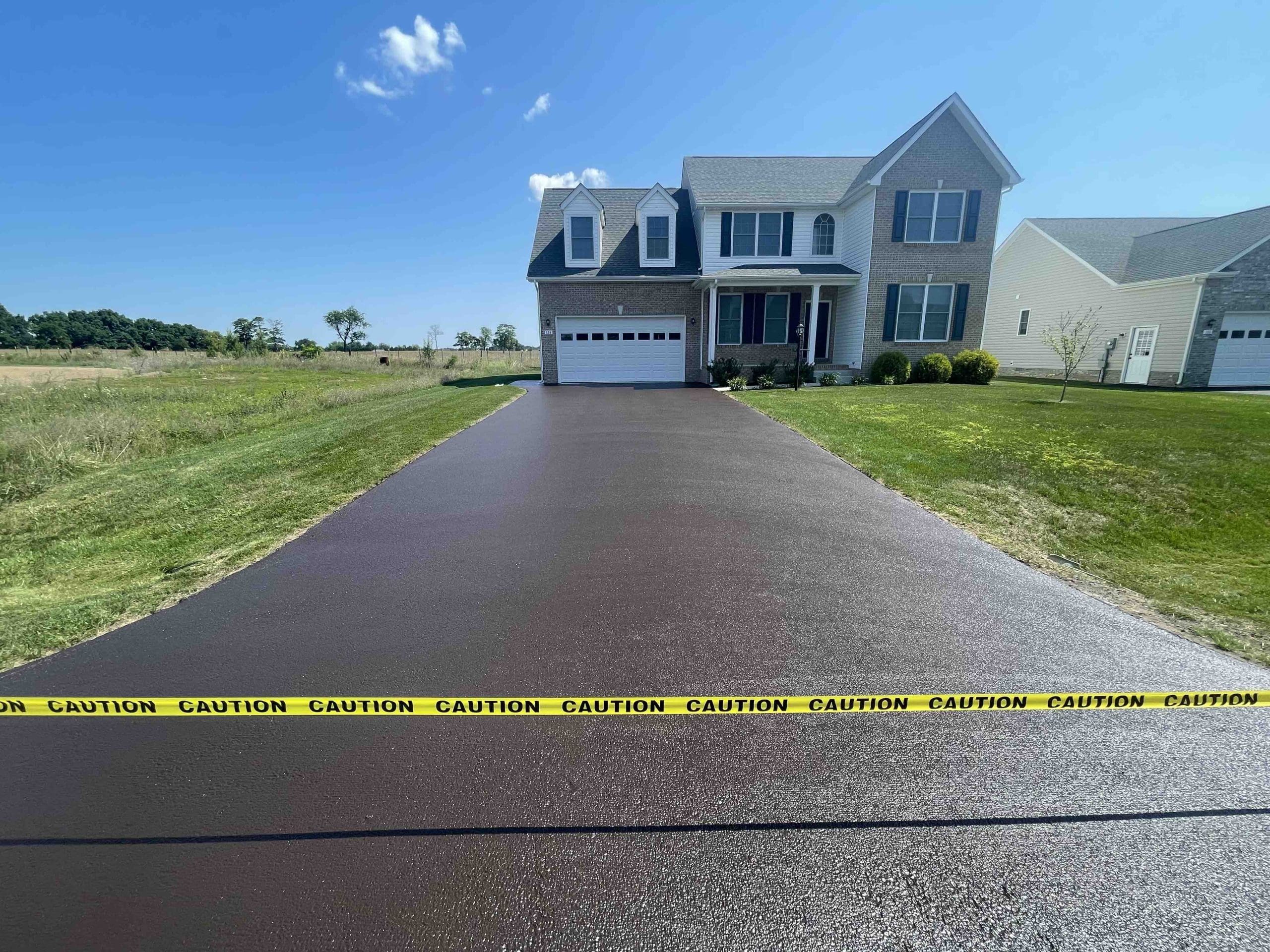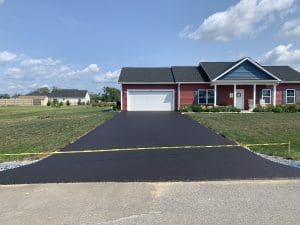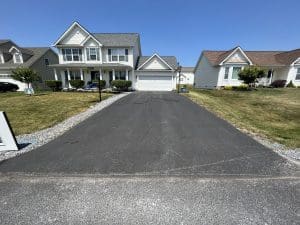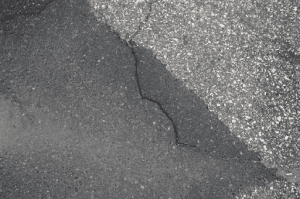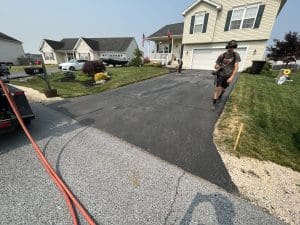Common Asphalt Problems: How Sealcoating Prevents Them
Enhancing Asphalt with Top Gun Sealcoating: A Comprehensive Guide
Asphalt stands as the backbone of our infrastructure, supporting roads, driveways, parking lots, and more. However, it’s susceptible to a range of issues over time that can jeopardize its integrity and appearance. To tackle these challenges effectively and ensure the longevity of our paved surfaces, it’s essential to understand these common asphalt problems. One outstanding solution to address these issues is sealcoating, which provides a protective layer to prevent problems from arising. Let’s delve deeper into the common asphalt problems and how sealcoating can prevent them.
Understanding Asphalt and Its Significance
Asphalt, also known as bitumen, is a versatile material crafted from aggregates like crushed stone and sand, blended with a binder, usually petroleum-based, giving asphalt its characteristic black hue. This mixture forms a robust and flexible surface capable of withstanding vehicular weight and enduring harsh weather conditions.
However, let’s explore the world of asphalt more profoundly, uncovering its composition and its critical role in our infrastructure.
The Composition of Asphalt
Asphalt’s composition may vary, but it generally includes bitumen and mineral fillers. Bitumen acts as a glue, binding the aggregates together and offering waterproofing properties. It’s derived from crude oil through a refining process where heavy fractions of crude oil are separated, resulting in bitumen as a byproduct.
Mineral fillers, such as limestone or volcanic ash, are incorporated into the asphalt mixture to boost stability and enhance performance. These fillers help fill the gaps between aggregates, resulting in a smoother surface that’s more resistant to cracking and deformation.
Moreover, additives like polymers can be introduced into the asphalt mix to further elevate its properties. These additives enhance resistance to rutting, cracking, and aging, contributing to a longer-lasting asphalt pavement.
The Role of Asphalt in Infrastructure
Asphalt plays a pivotal role in our infrastructure by providing a smooth and durable surface for transportation. Whether it’s roads, highways, airport runways, or parking lots, asphalt reigns supreme due to its exceptional performance.
One of asphalt’s key advantages is its excellent traction for vehicles and pedestrians. Its surface texture offers ample grip, reducing the risk of accidents, especially in wet or icy conditions. This makes it the preferred choice for areas with high traffic volumes where safety is paramount.
Furthermore, asphalt safeguards the underlying layers of pavement. It acts as a barrier against moisture infiltration, preventing water from seeping into the subbase and causing damage. By maintaining a dry and stable foundation, asphalt extends the lifespan of the pavement, reducing the need for frequent repairs and replacements.
Additionally, asphalt emerges as a sustainable choice for infrastructure development. It’s 100% recyclable, with reclaimed asphalt pavement (RAP) being reusable in new asphalt mixes. This not only diminishes the demand for virgin materials but also curtails waste and conserves natural resources.
In summary, asphalt is an outstanding material known for its durability, flexibility, and superb performance in various infrastructure applications. Its composition, featuring bitumen and mineral fillers, underpins its strength and durability. By providing a smooth and secure surface for transportation, asphalt plays an indispensable role in our daily lives and the advancement of sustainable infrastructure.
Identifying Common Asphalt Problems
Despite its reputation for durability, asphalt is susceptible to specific issues that can significantly affect its performance. Here are some prevalent problems that may arise:
1. Cracking and Potholes: Cracks and potholes are some of the most frequent issues with asphalt. These problems can occur due to the freeze-thaw cycle, heavy traffic, poor drainage, or subpar pavement installation. Cracks and potholes not only pose hazards to vehicles and pedestrians but also expedite asphalt deterioration.
2. Oxidation and Fading: Prolonged exposure to ultraviolet (UV) rays from the sun can lead to oxidation and fading of the asphalt surface. This process breaks down the binder, resulting in brittleness, cracking, and a faded, worn-out appearance. Oxidation can weaken the asphalt, making it more susceptible to other forms of damage.
3. Oil and Gas Spills: Vehicles leaking oil, gasoline, or other petroleum-based substances can cause significant damage to asphalt. These spills not only mar the surface’s appearance but also penetrate the asphalt’s structure, leading to softening and weakening. If left unaddressed, oil and gas spills can result in extensive and irreversible damage.
The Science Behind Sealcoating
Sealcoating stands as a tried-and-tested method for preventing and addressing common asphalt problems. By applying a protective layer of sealant to the surface, sealcoating acts as a shield, safeguarding the asphalt from the detrimental effects of UV rays, water, oil, and other contaminants.
What is Sealcoating?
Sealcoating is a process that involves applying a thin layer of asphalt-based emulsion or coal tar pitch to the existing asphalt’s surface. This layer forms a protective barrier, sealing small cracks and imperfections, preventing water penetration, and enhancing the overall appearance of the pavement.
The Materials Used in Sealcoating
The materials used in sealcoating may vary, but they generally comprise refined coal tar pitch or asphalt emulsion, mineral fillers, and additives. These additives can include polymers, latex, or rejuvenating agents, which enhance the sealcoat’s durability and flexibility.
How Sealcoating Prevents Asphalt Problems
Sealcoating serves as a proactive measure to prevent and combat common asphalt problems. Let’s delve into how this process effectively addresses some of the most prevalent issues:
Sealcoating and Crack Prevention: Sealcoating seals small cracks and fissures, preventing water from infiltrating the pavement layers. Water penetration can lead to further cracking, erosion of the base material, and asphalt deterioration. Sealcoating acts as a waterproof barrier, reducing the risk of extensive damage and preserving the pavement’s integrity.
Combating Oxidation with Sealcoating: Sealcoating blocks harmful UV rays from reaching the asphalt surface, minimizing oxidation and fading. This protective layer shields the binder from UV exposure, thereby preserving its flexibility and preventing brittleness. By slowing down the oxidation process, sealcoating helps extend the asphalt’s lifespan.
Sealcoating’s Role in Spill Resistance: Sealcoating acts as a shield against oil and gas spills, preventing them from penetrating the asphalt and causing damage. The sealant resists the absorption of petroleum-based substances, making it easier to clean and minimizing the long-term impact on the pavement’s structure. This spill resistance significantly reduces the potential for costly repairs or replacement.
The Process of Applying Sealcoating
The application of sealcoating involves several important steps to ensure a successful and long-lasting result:
Preparing the Asphalt Surface: Prior to sealcoating, the asphalt surface must be thoroughly cleaned, with any debris, oil, or vegetation removed. This ensures proper adhesion between the sealant and the pavement. Crack sealing and repairs should also be completed before sealcoating to maximize its effectiveness and longevity.
The Application of Sealcoating: Sealcoating can be applied using various methods, such as spraying or squeegee application. The sealant is evenly spread across the surface, typically in multiple coats, allowing sufficient drying time between each layer. The sealcoating process can be performed by professional contractors or as a do-it-yourself project, depending on the scale and complexity.
In Conclusion
Understanding common asphalt problems and their impact is crucial in maintaining the integrity and longevity of our paved surfaces. Sealcoating provides a reliable solution to combat the detrimental effects of cracking, oxidation, and oil spills. By creating a protective barrier, sealcoating prevents water penetration, slows down oxidation, and resists the absorption of harmful substances. Regular sealcoating can significantly extend the lifespan of asphalt, ensuring safer and aesthetically pleasing surfaces while reducing the need for costly repairs. So, let’s embrace the power of sealcoating with Top Gun Sealcoating and preserve our asphalt infrastructure for years to come.
